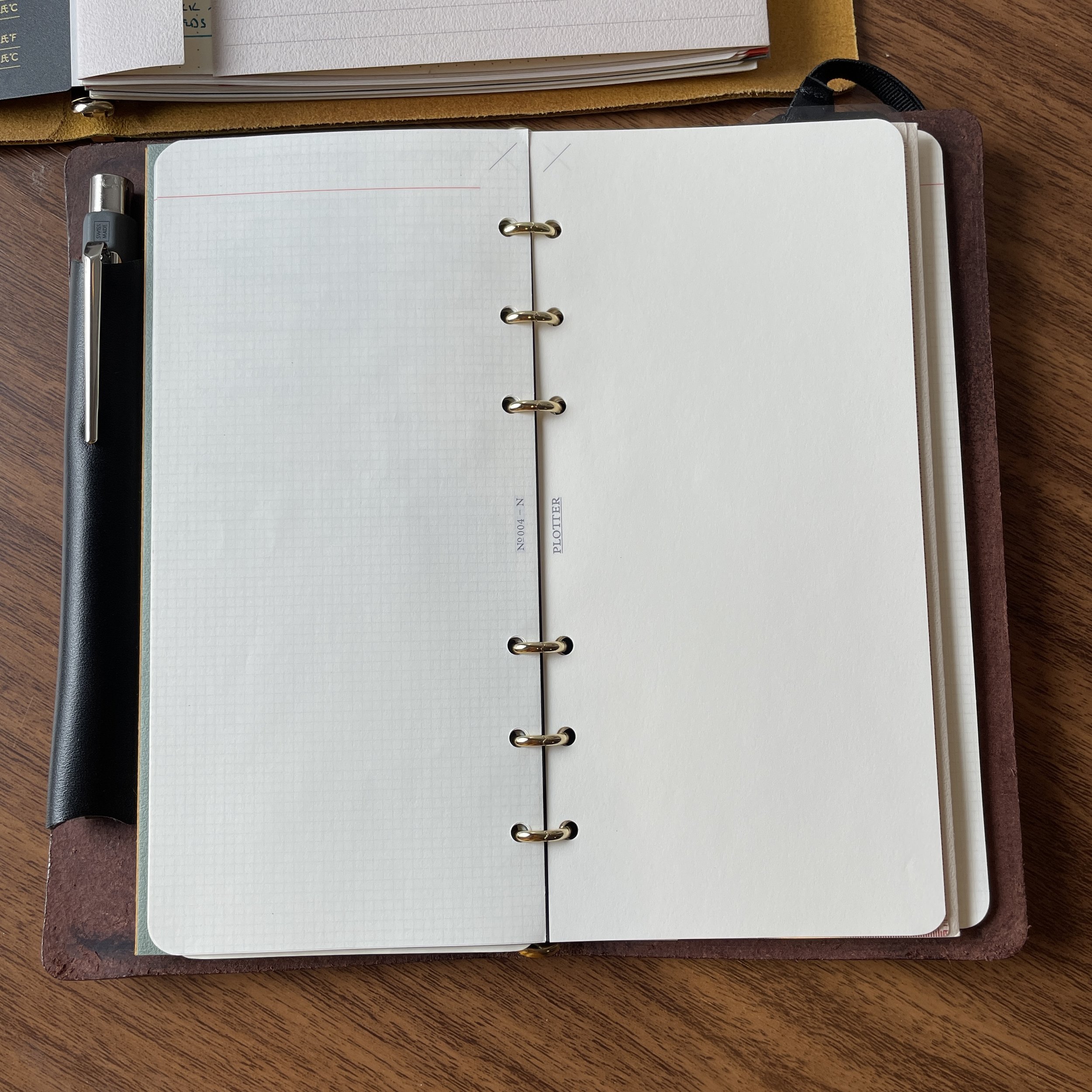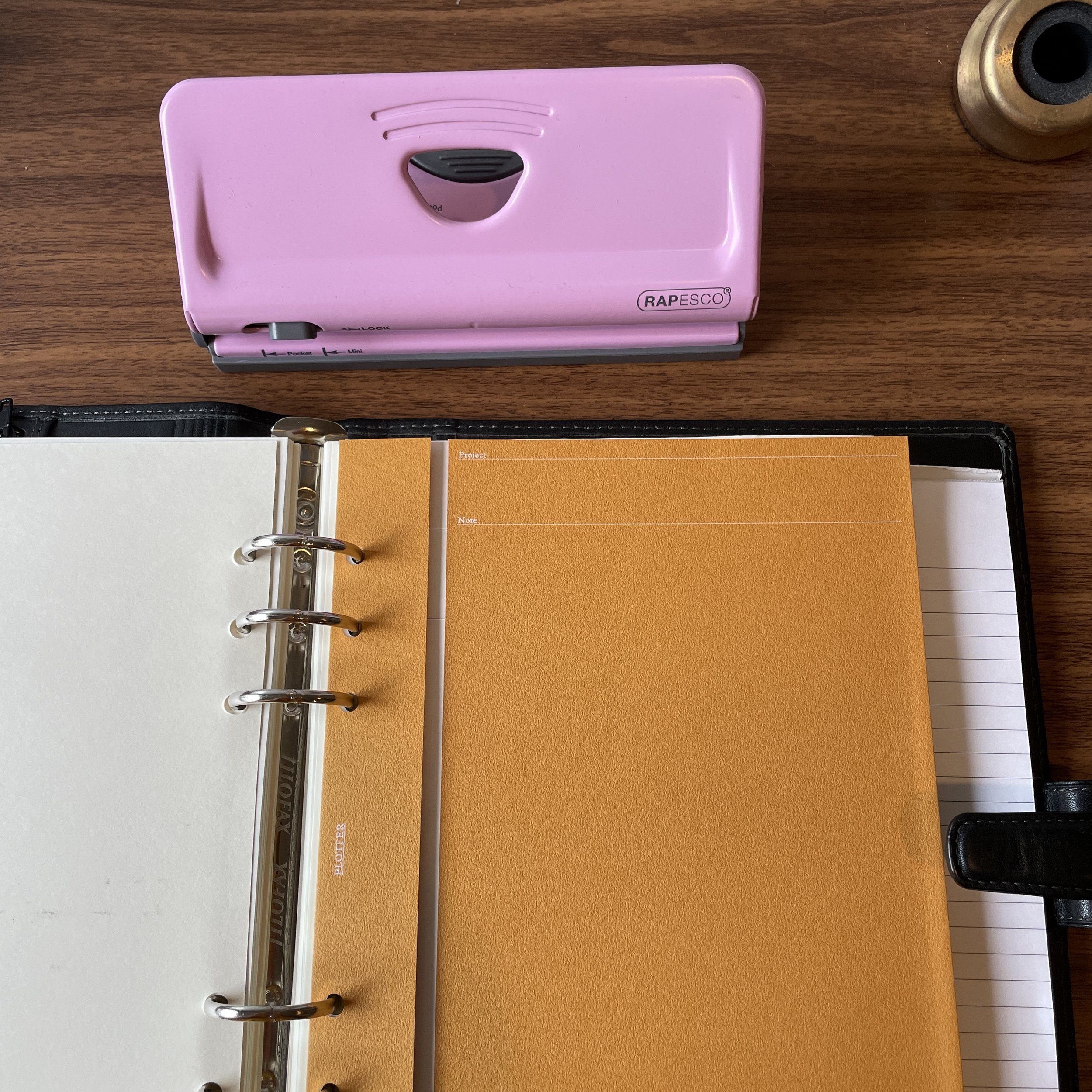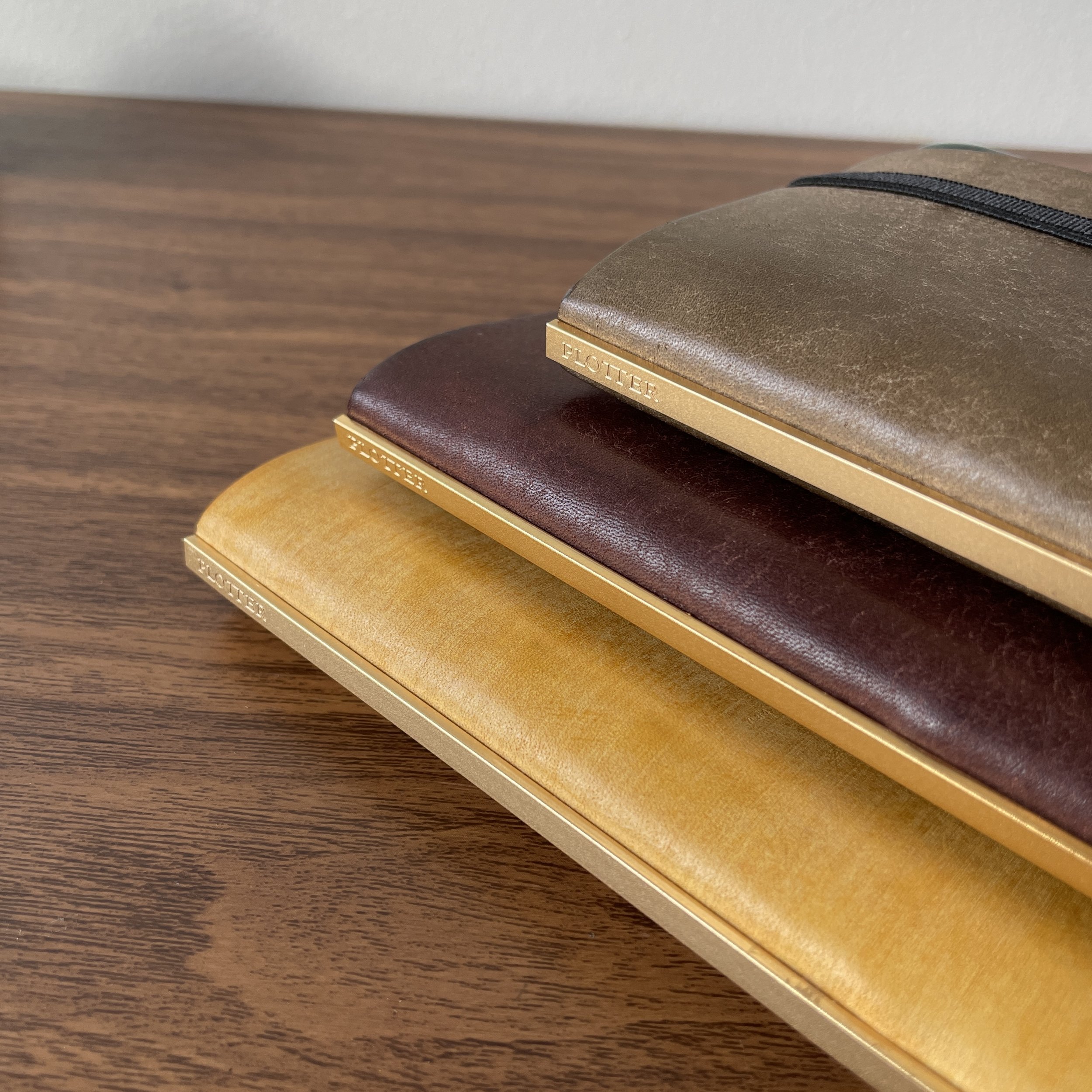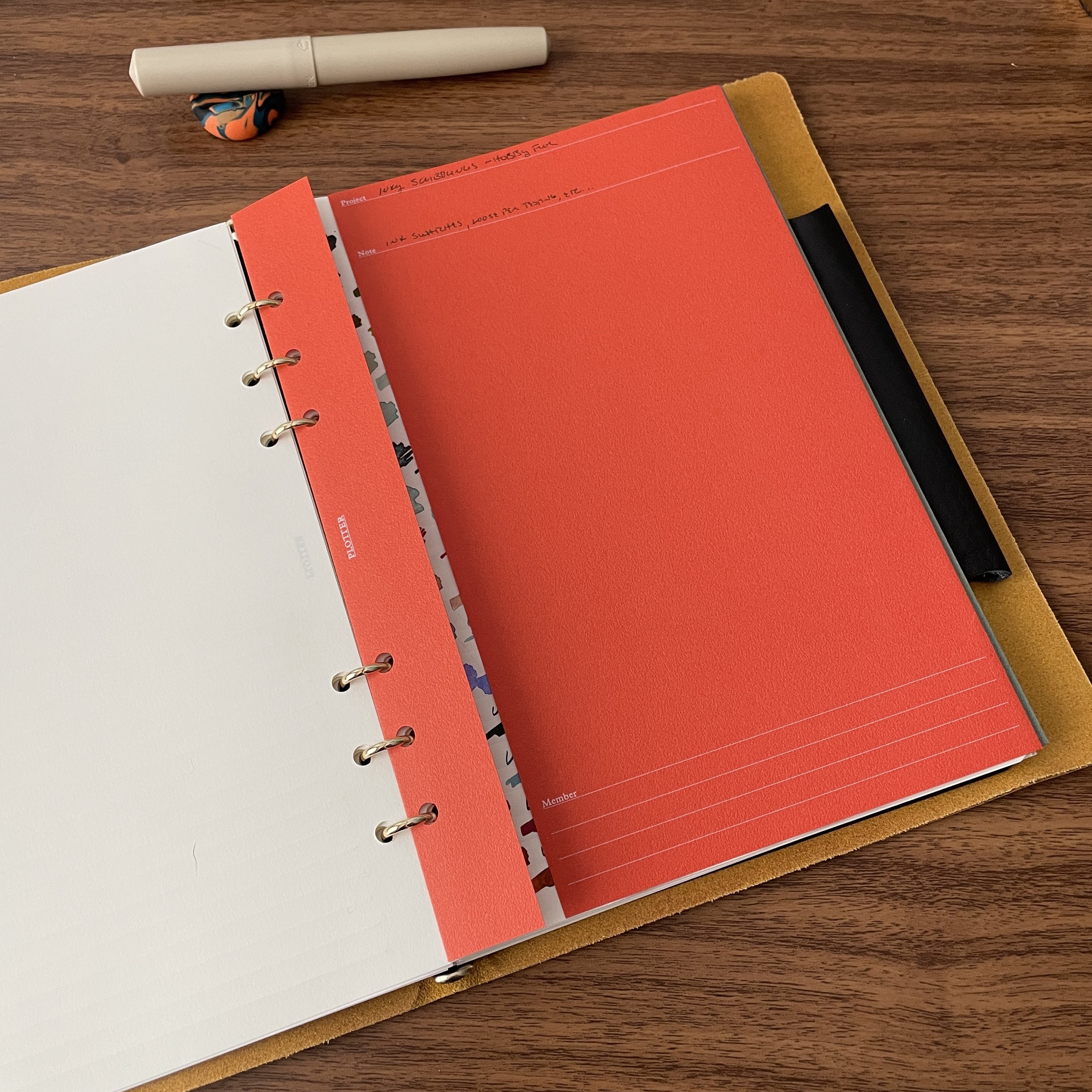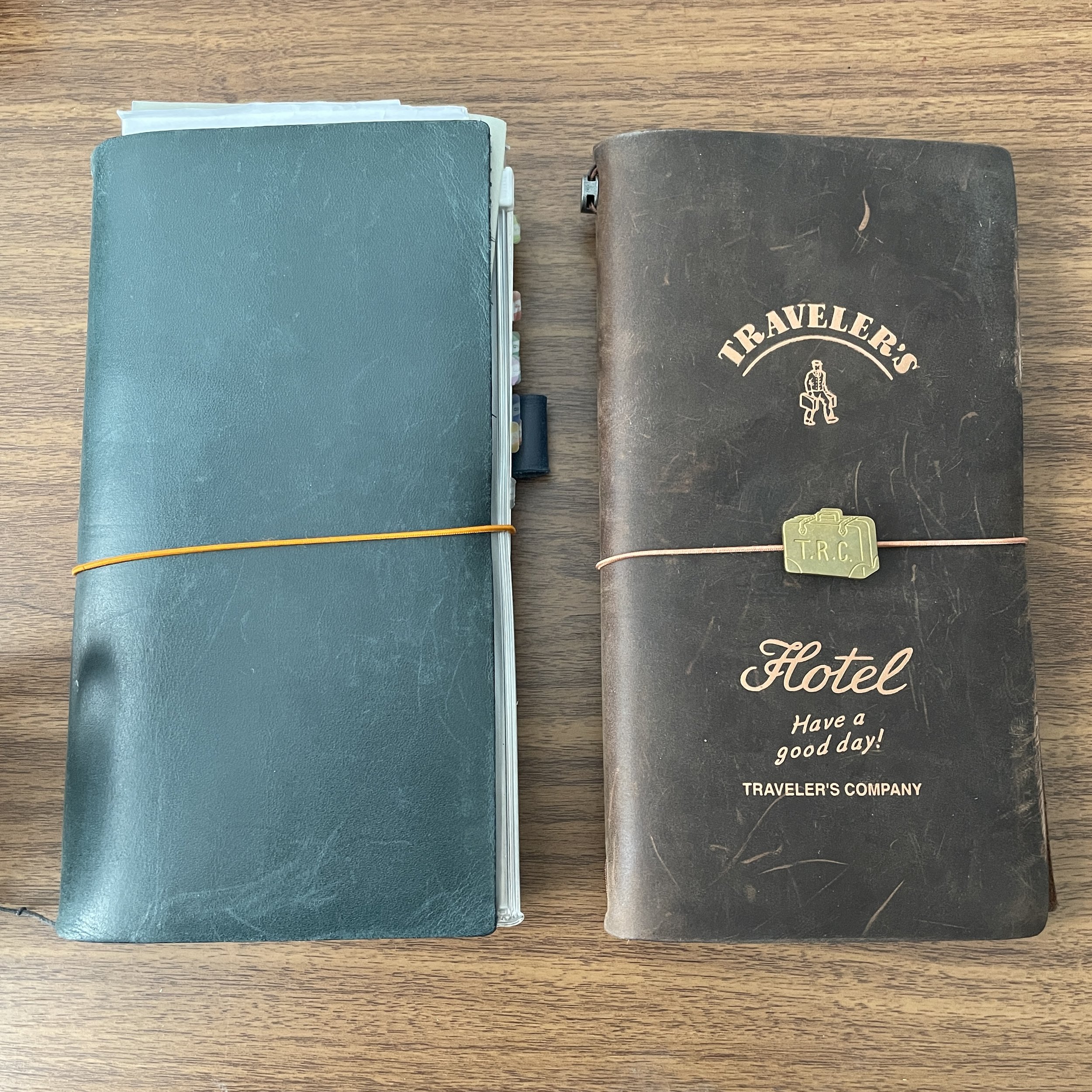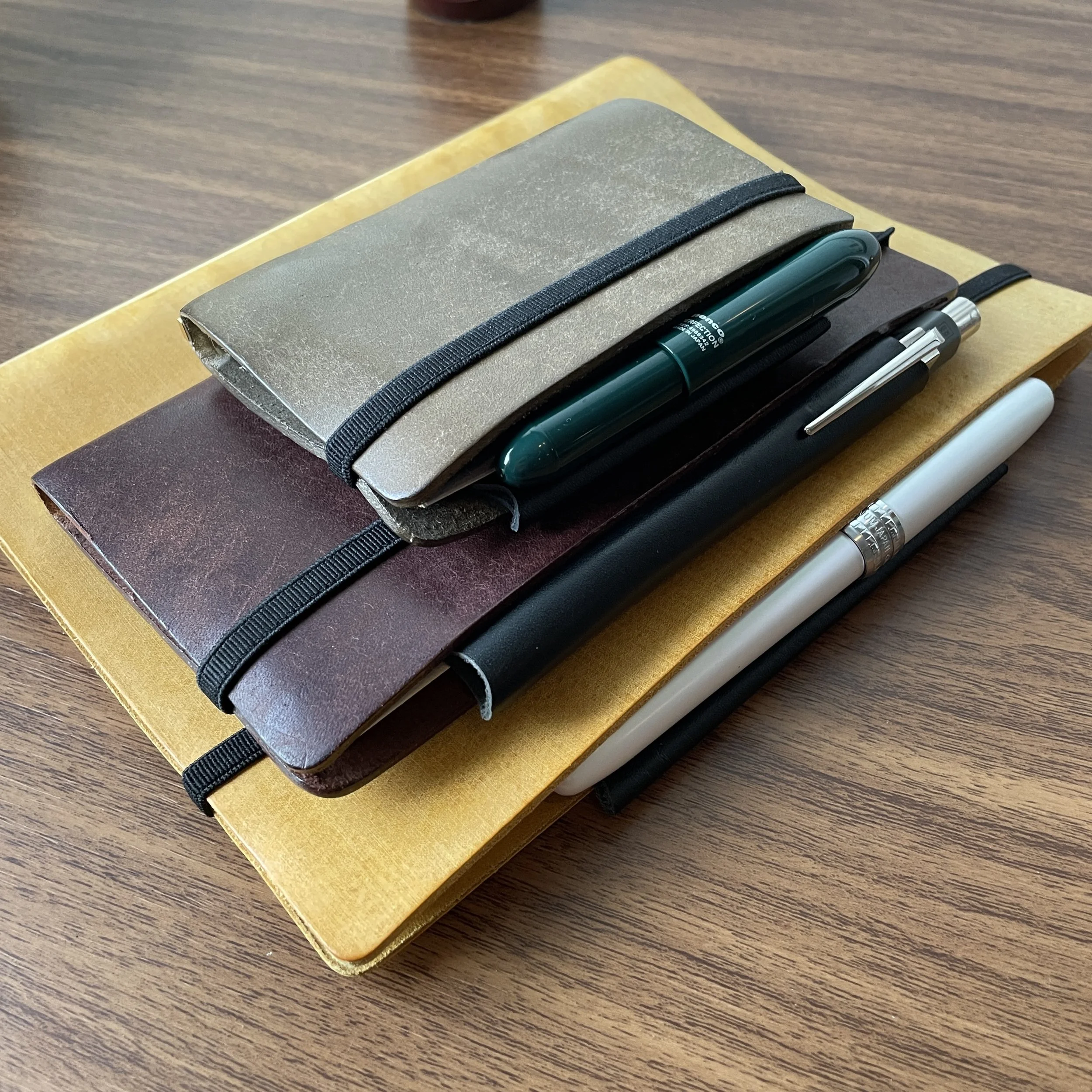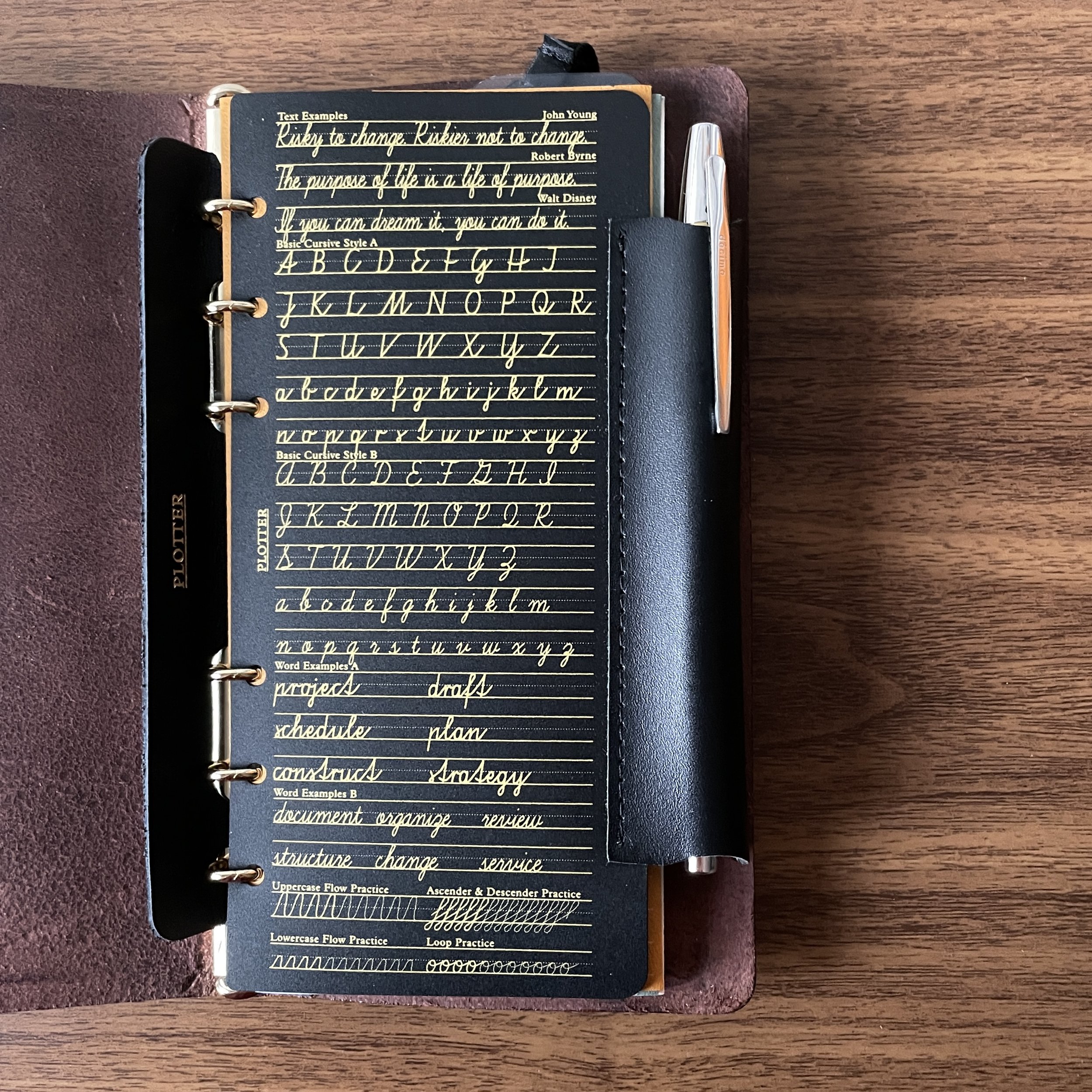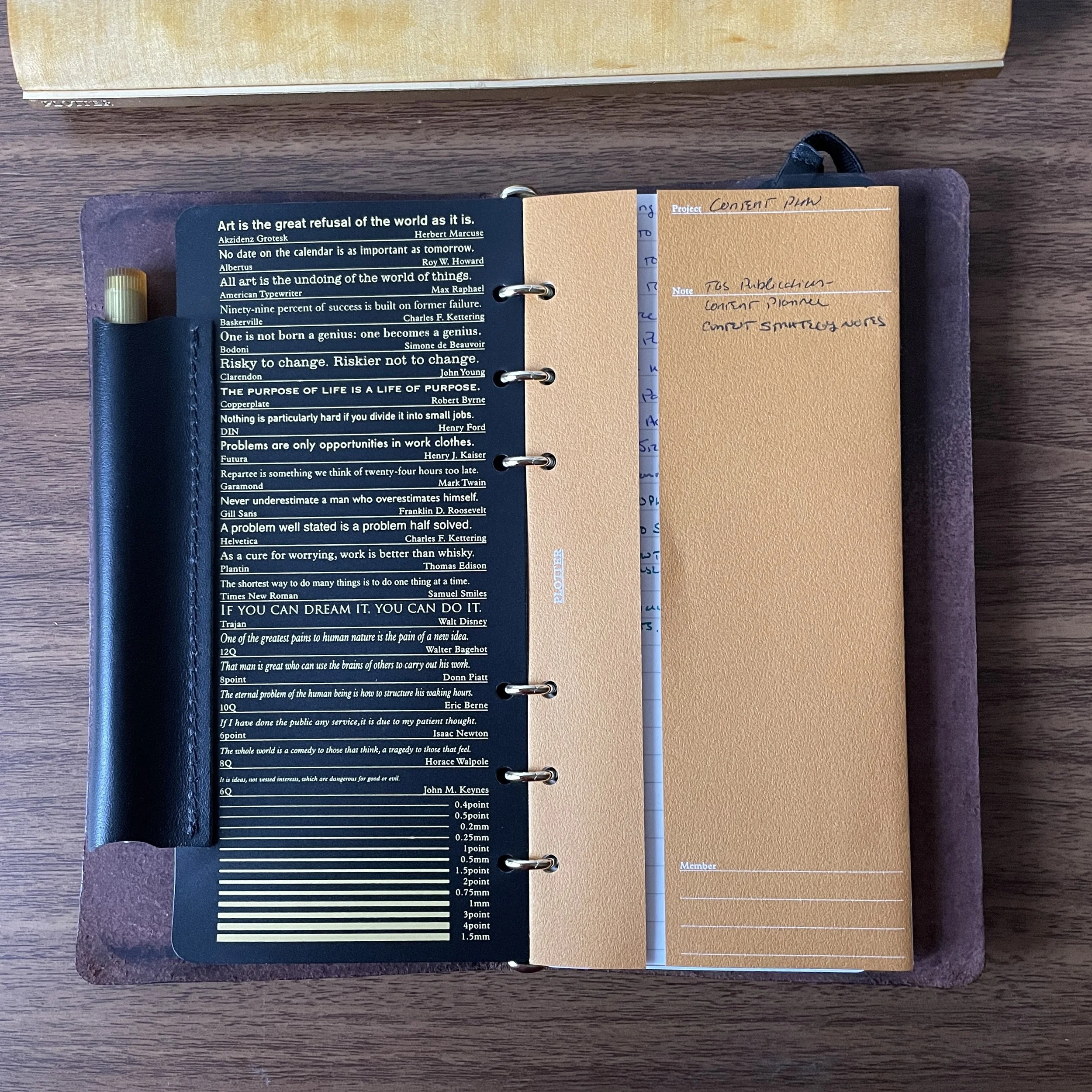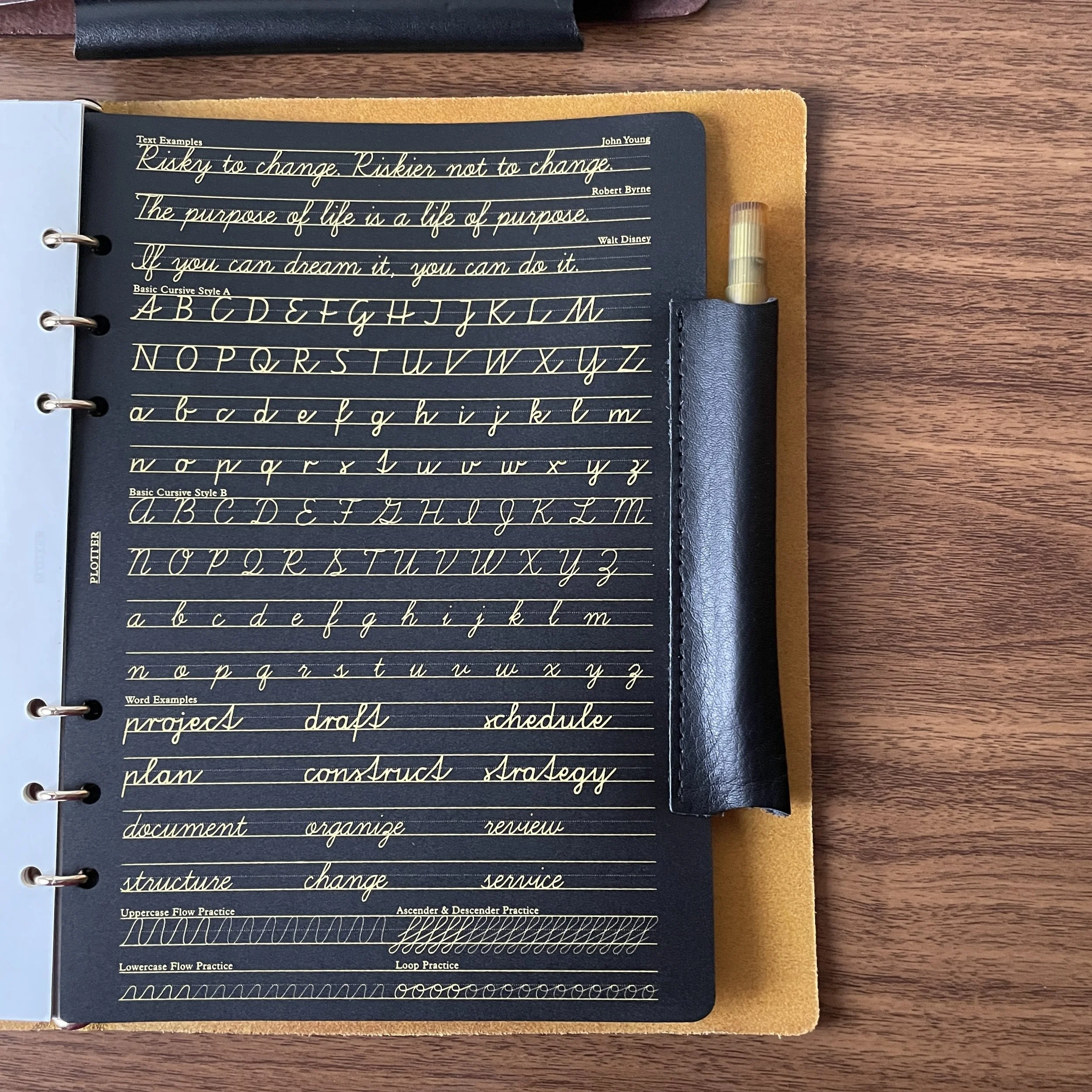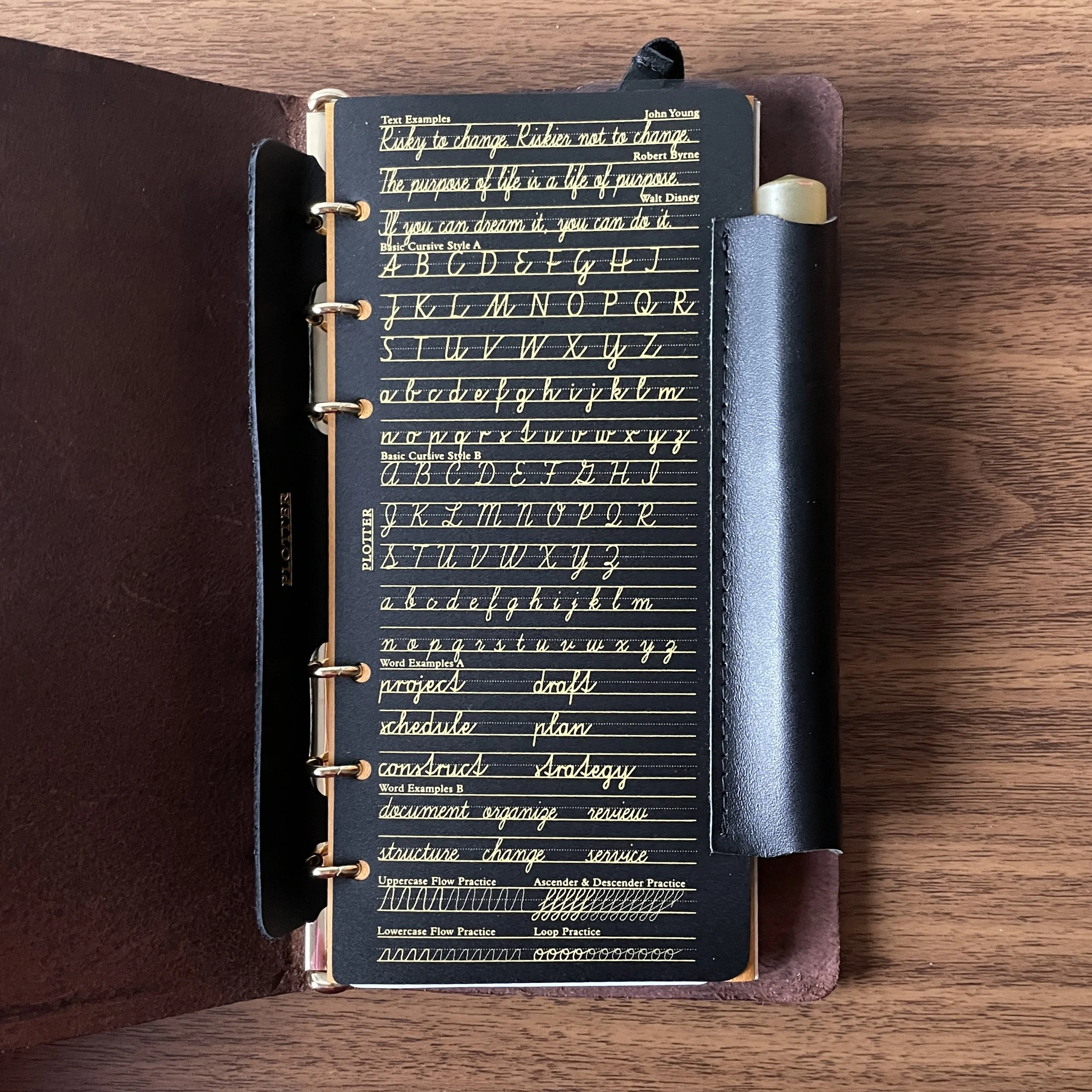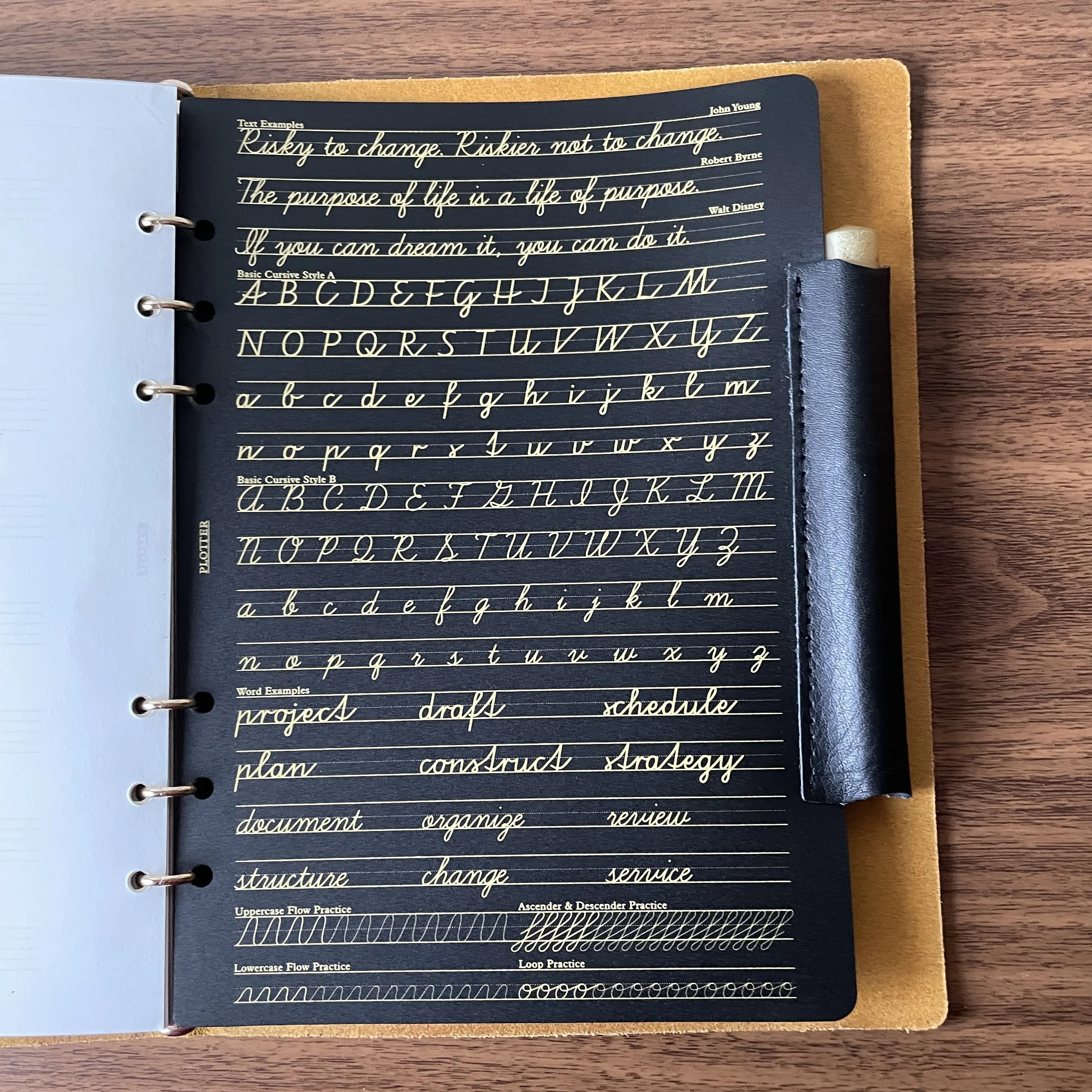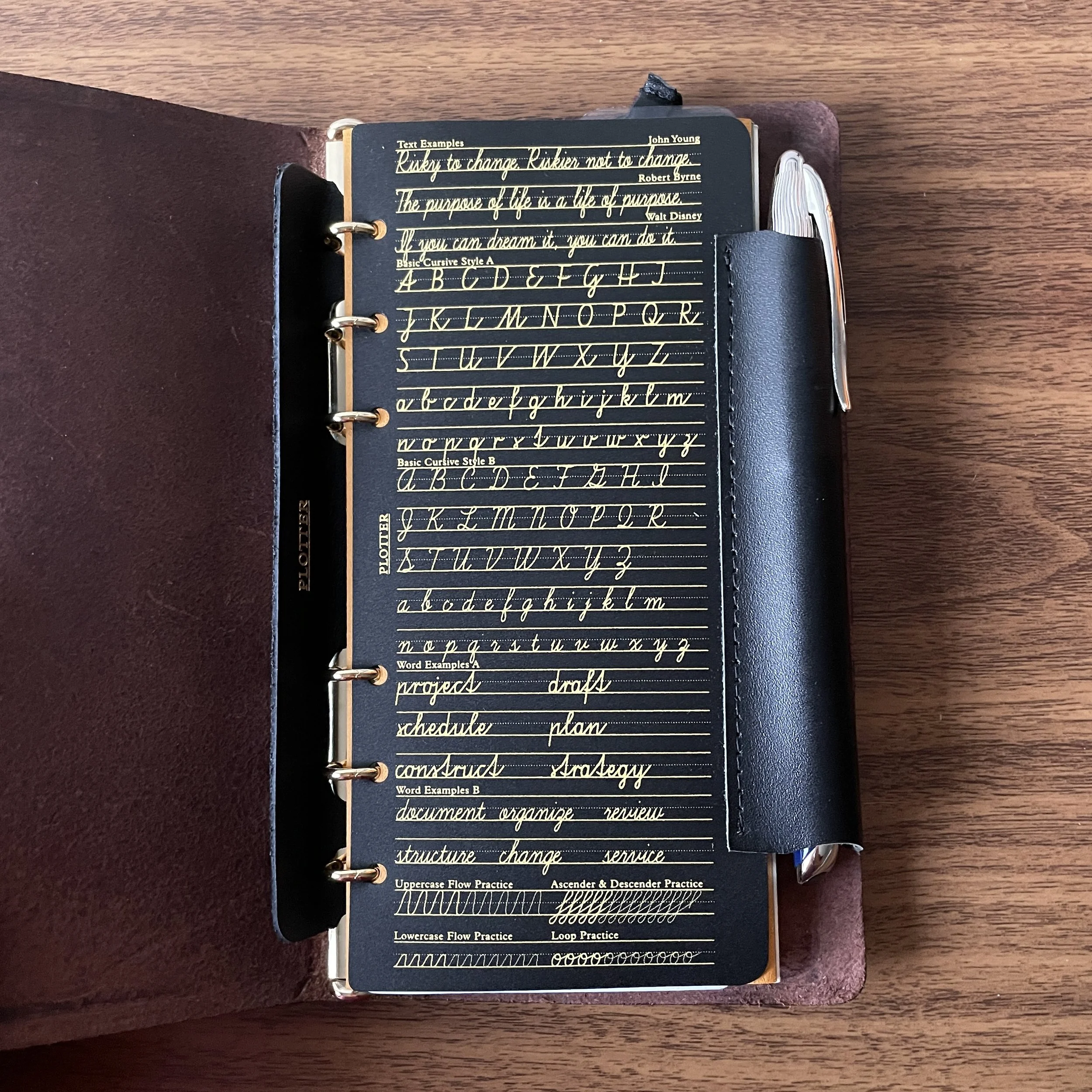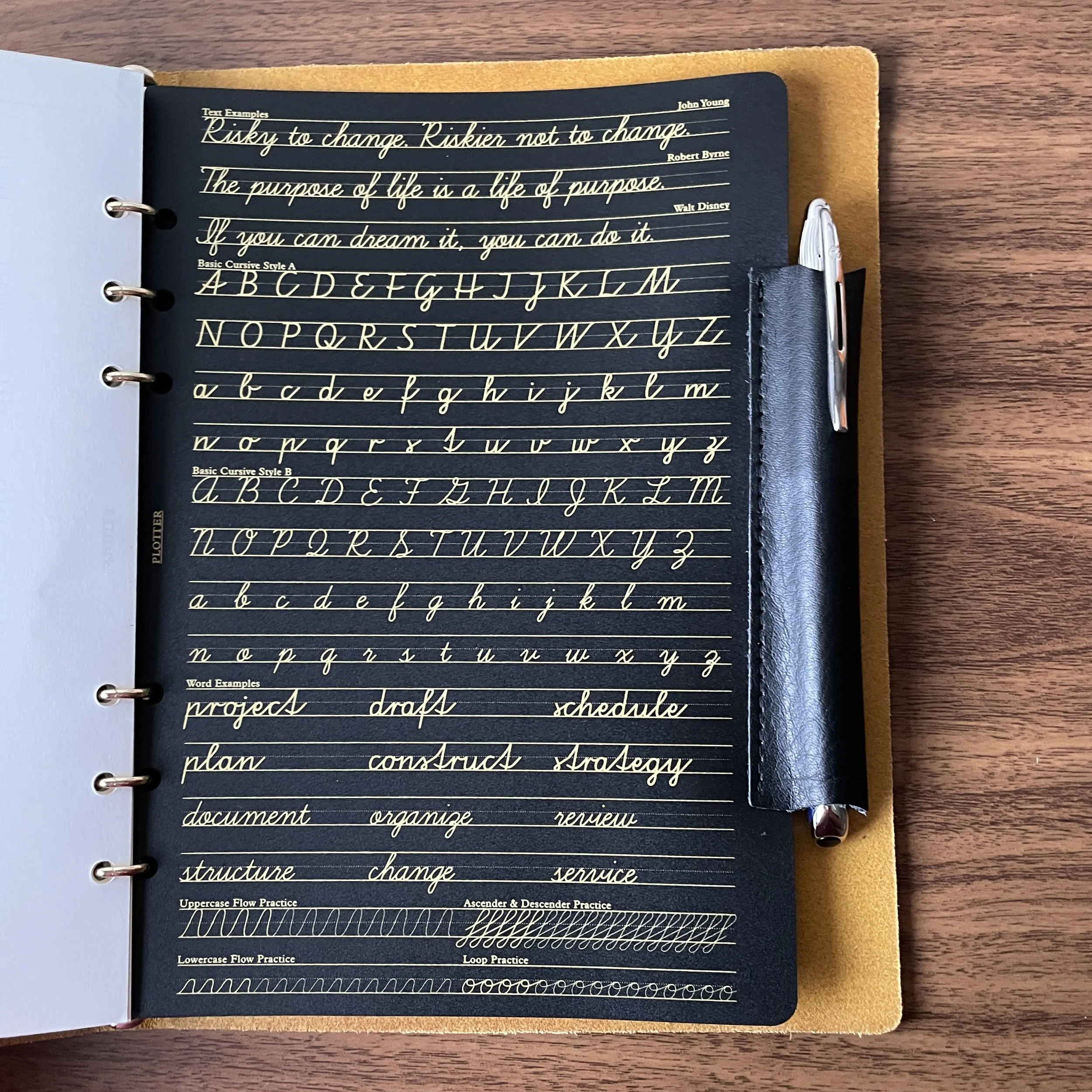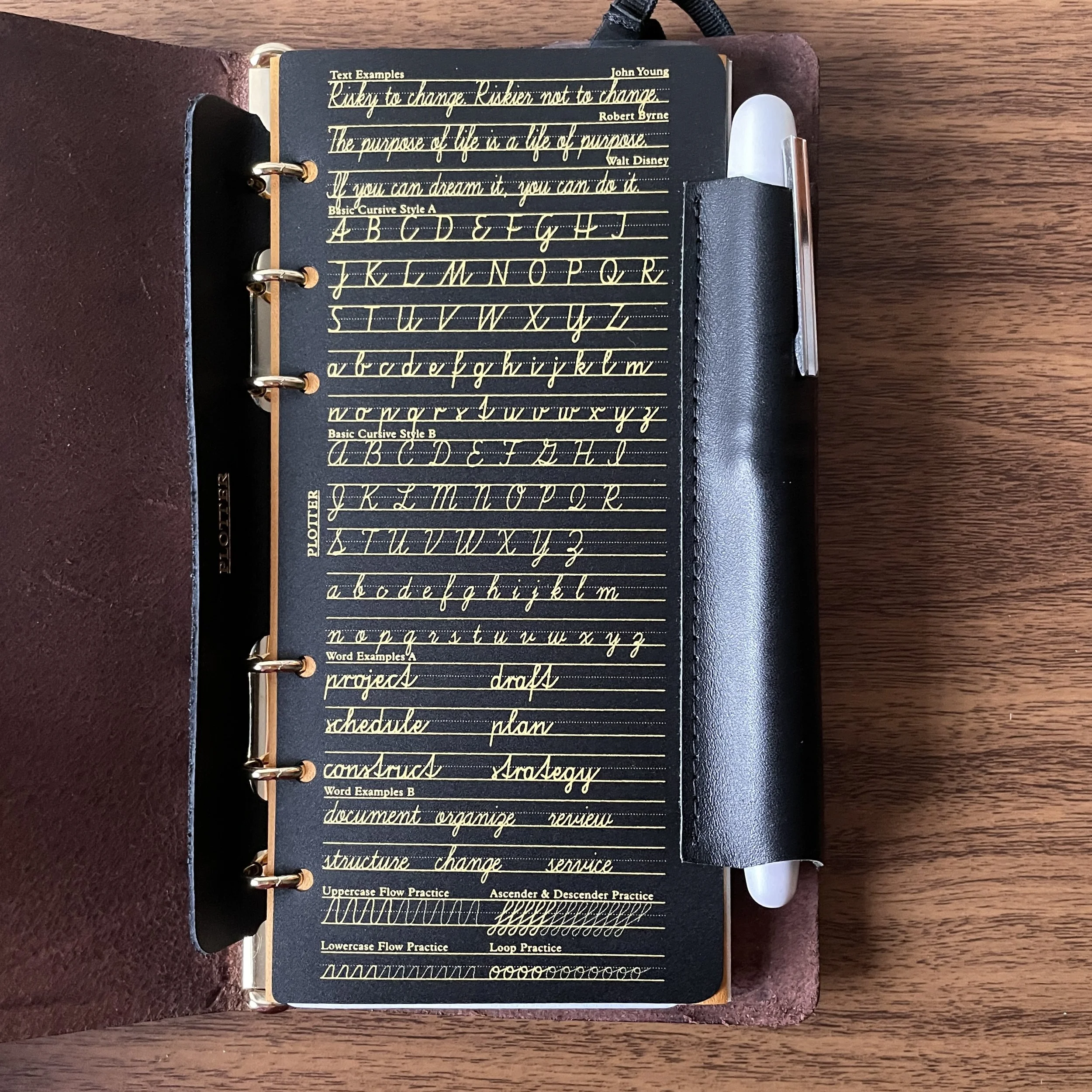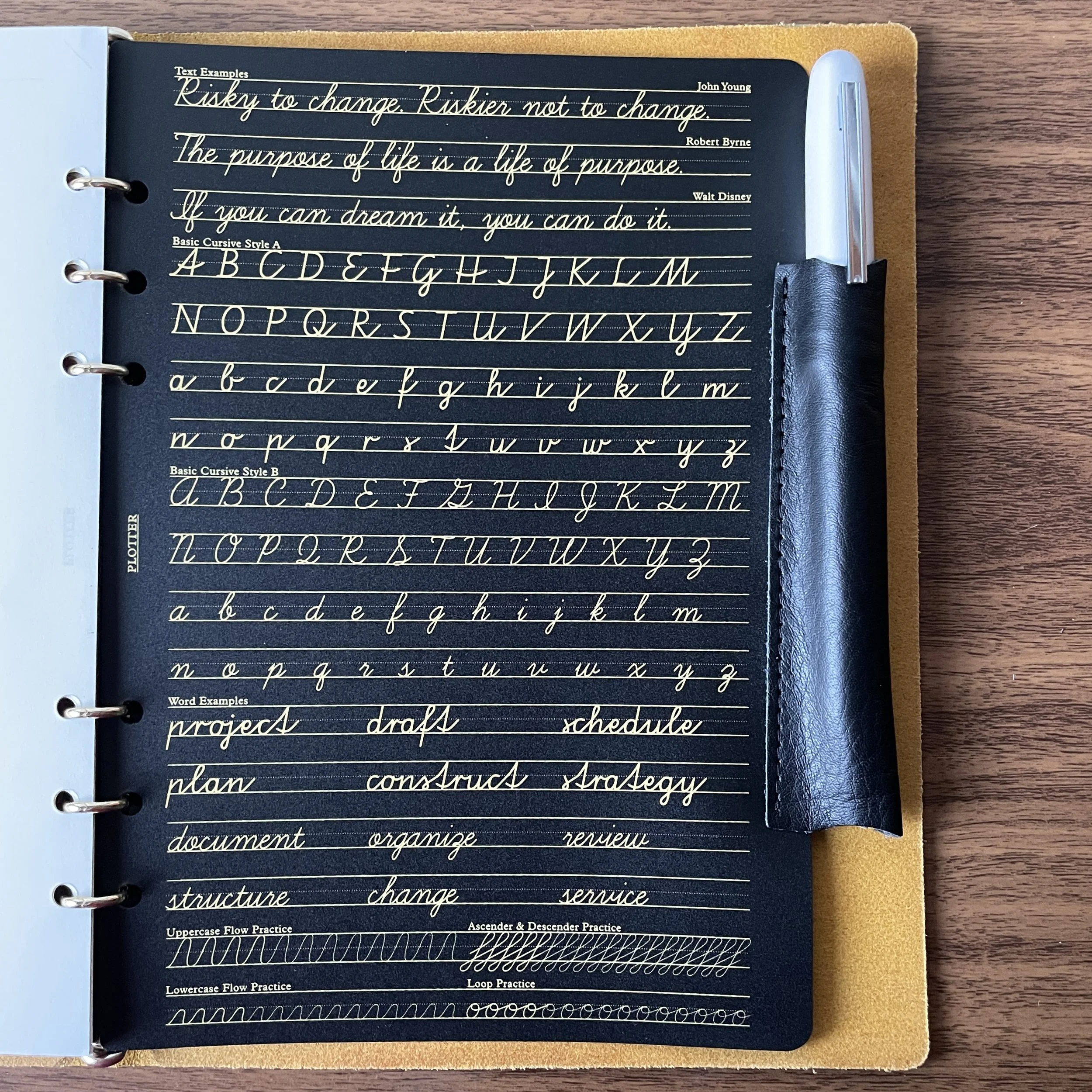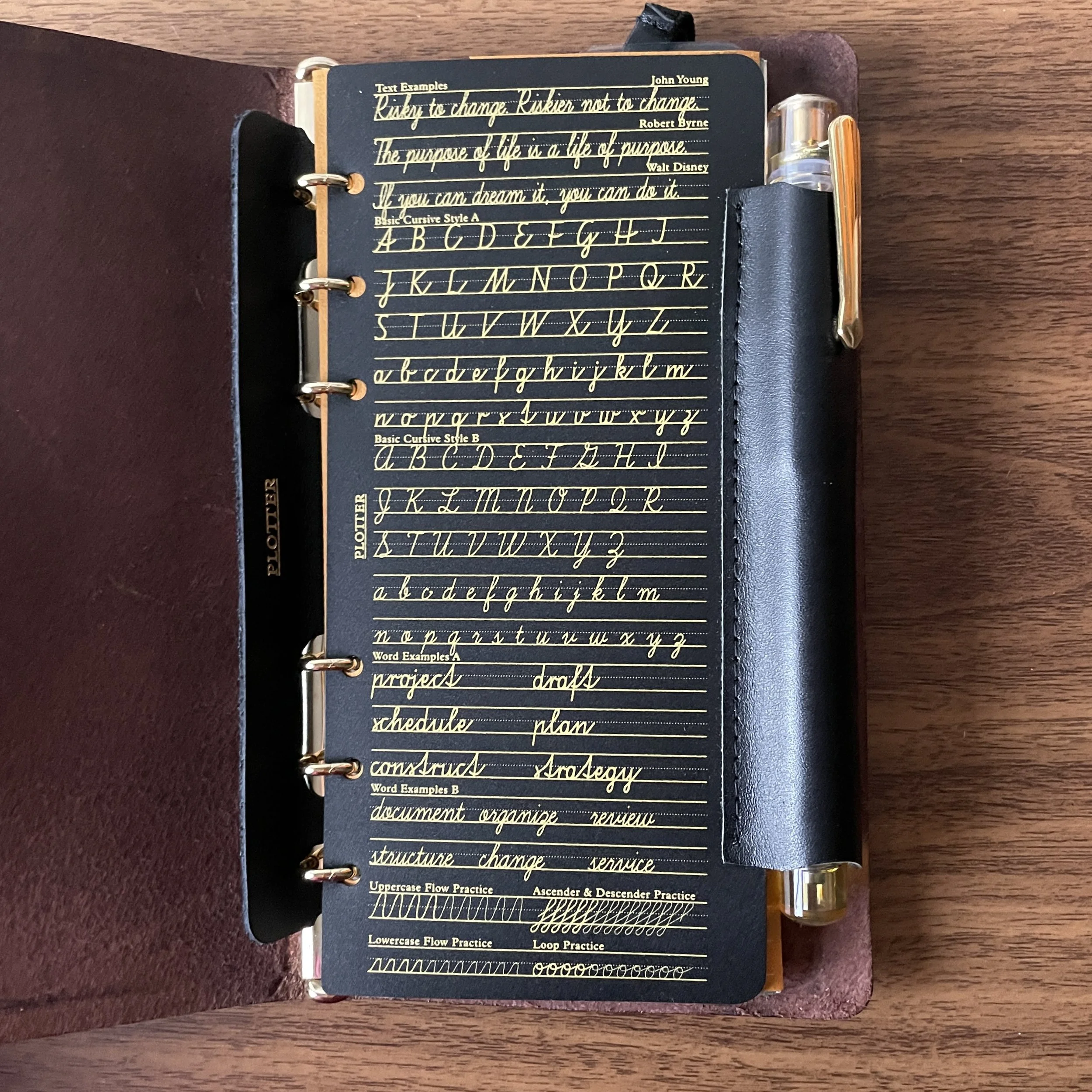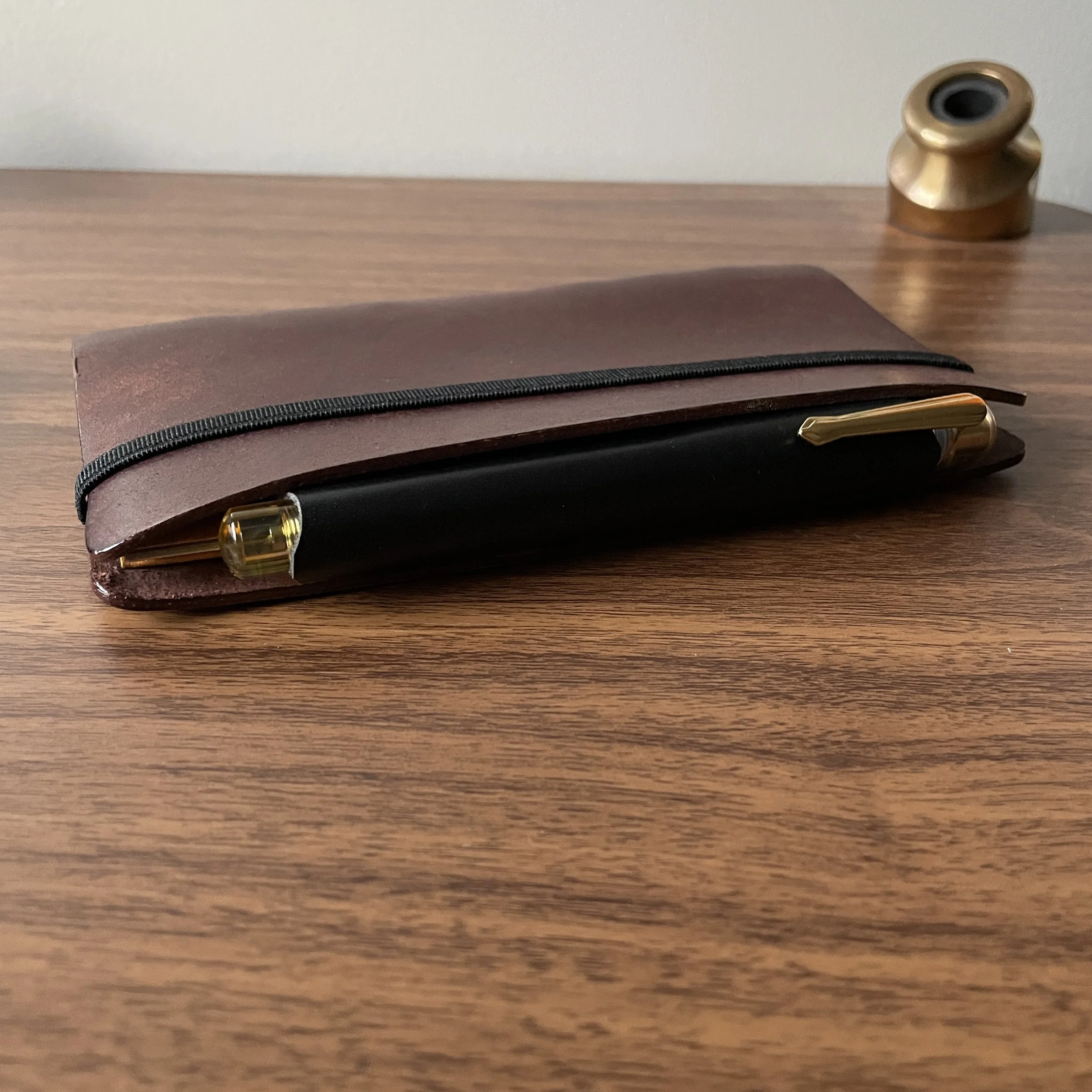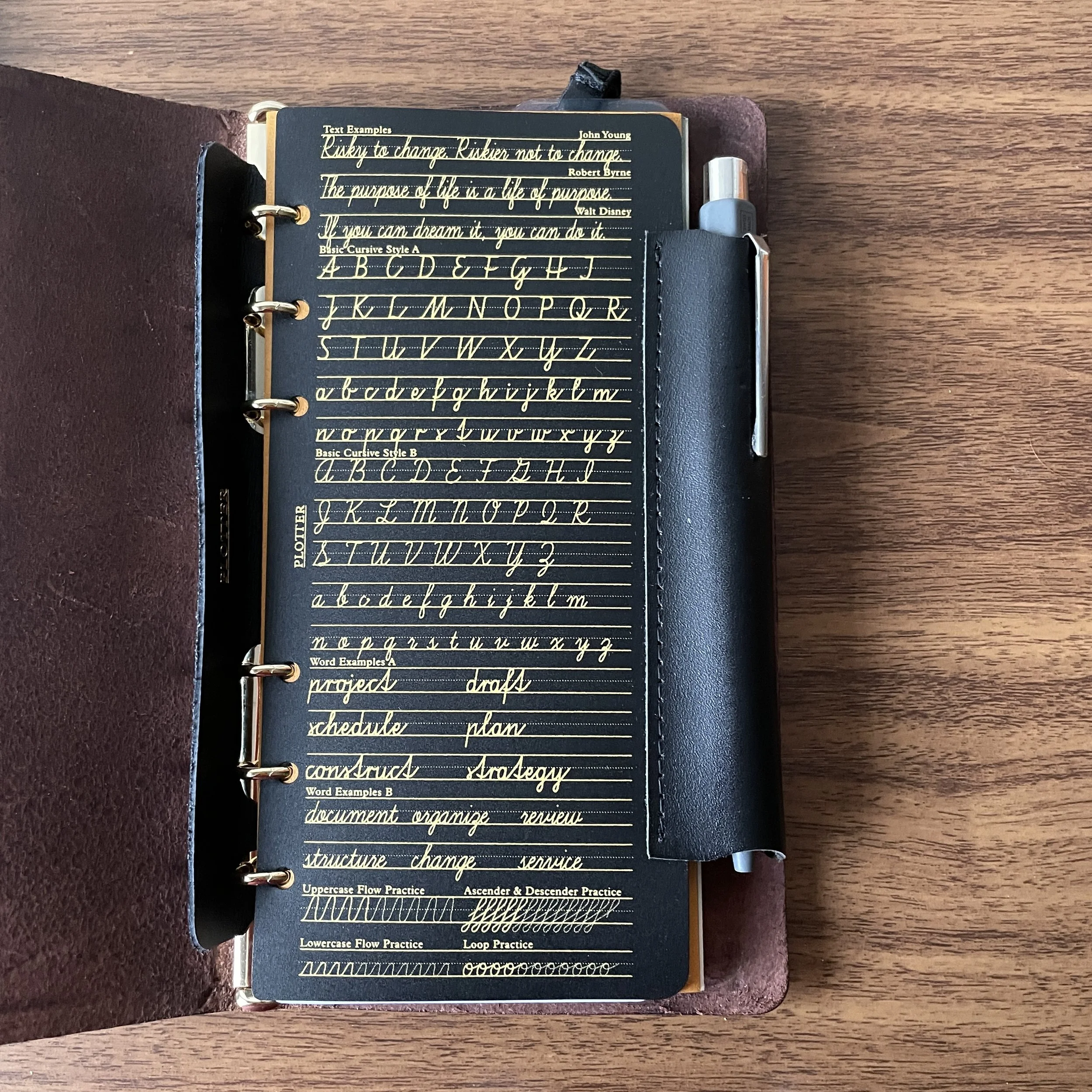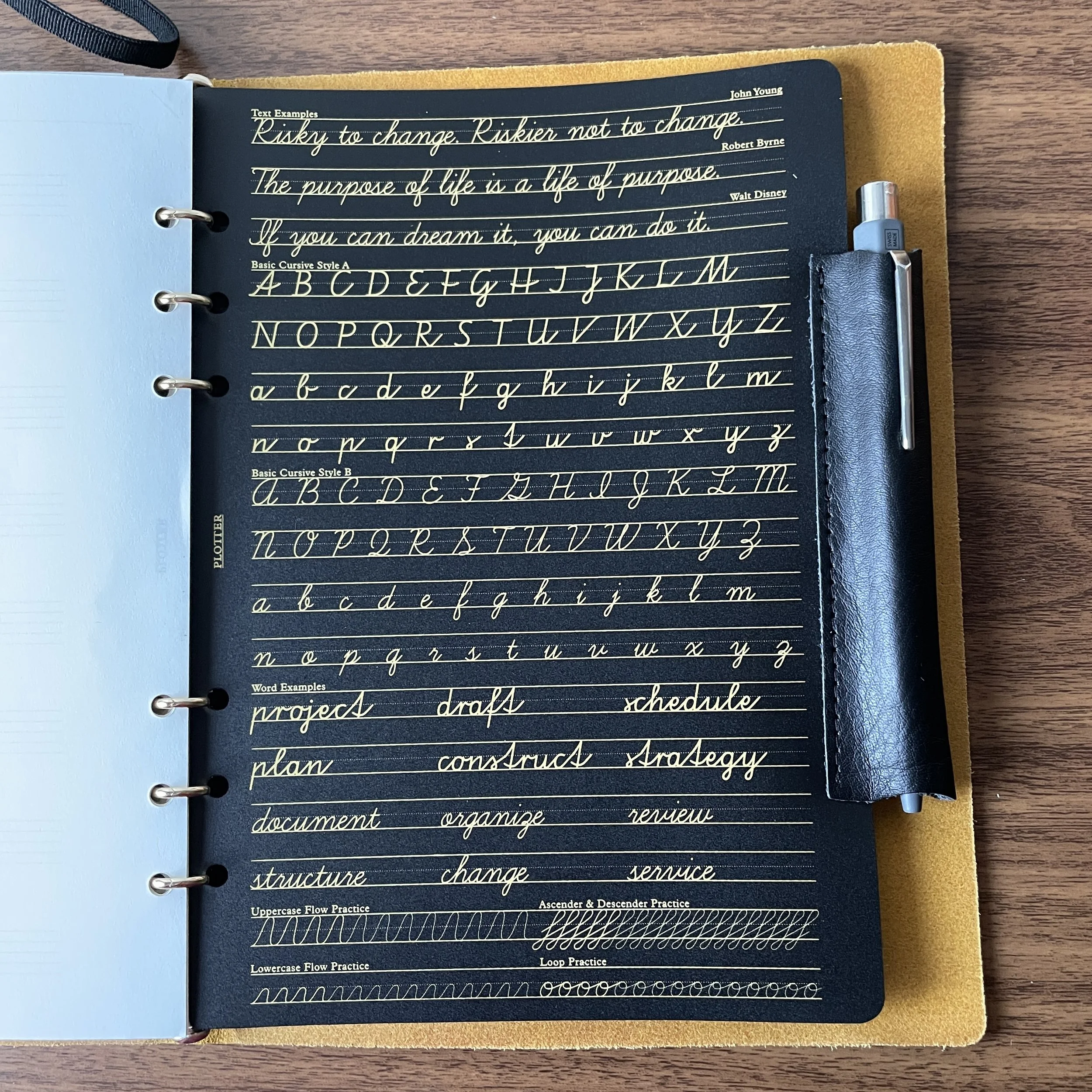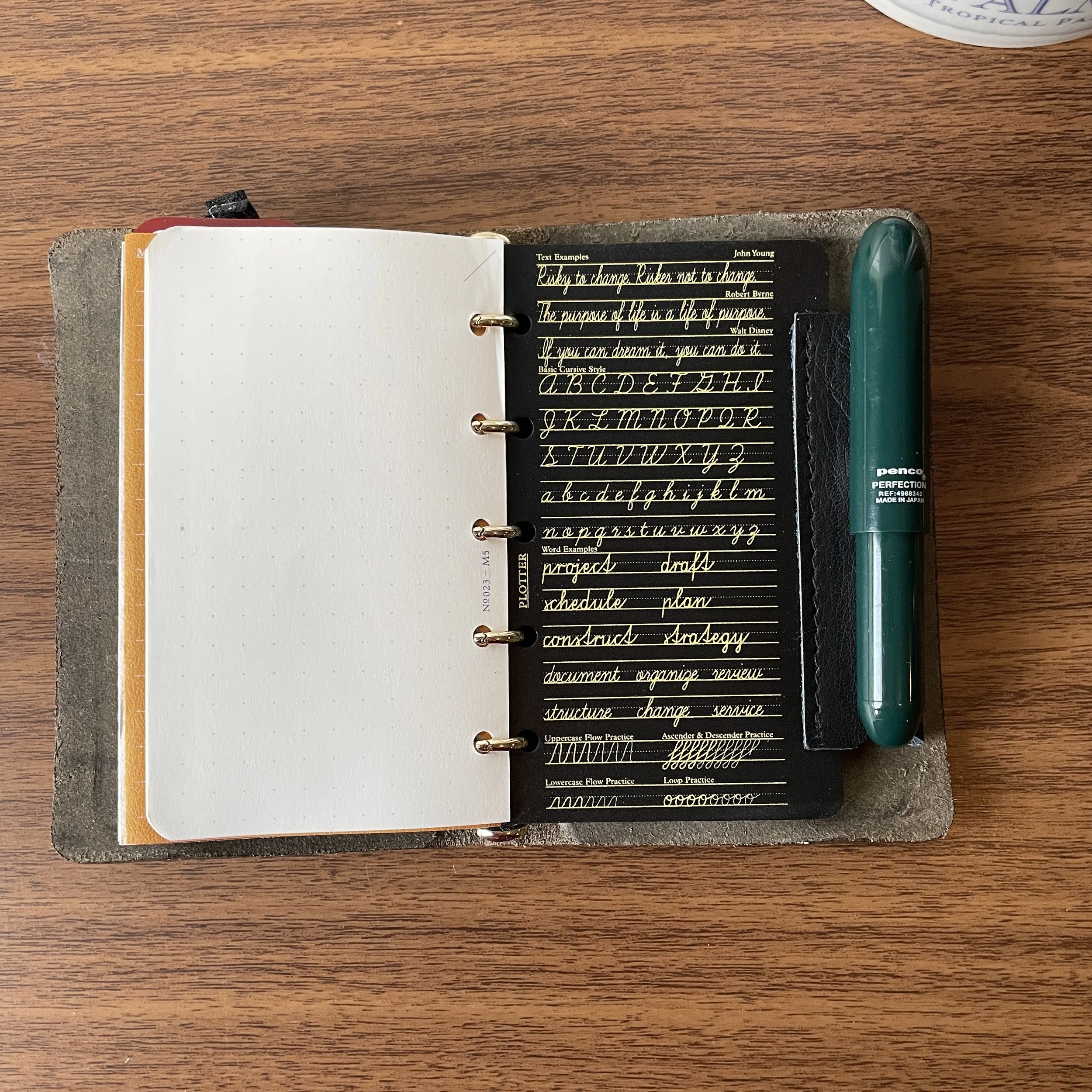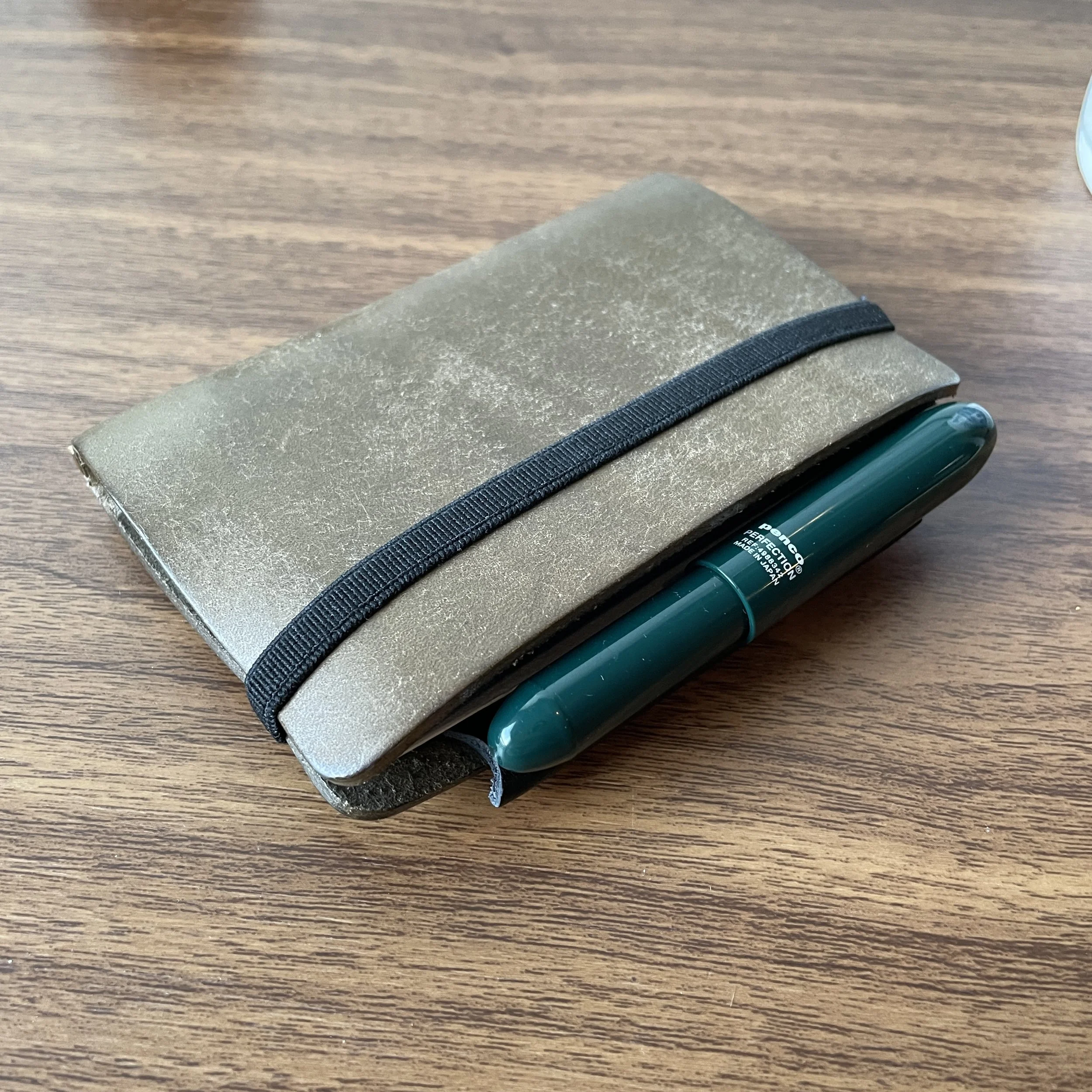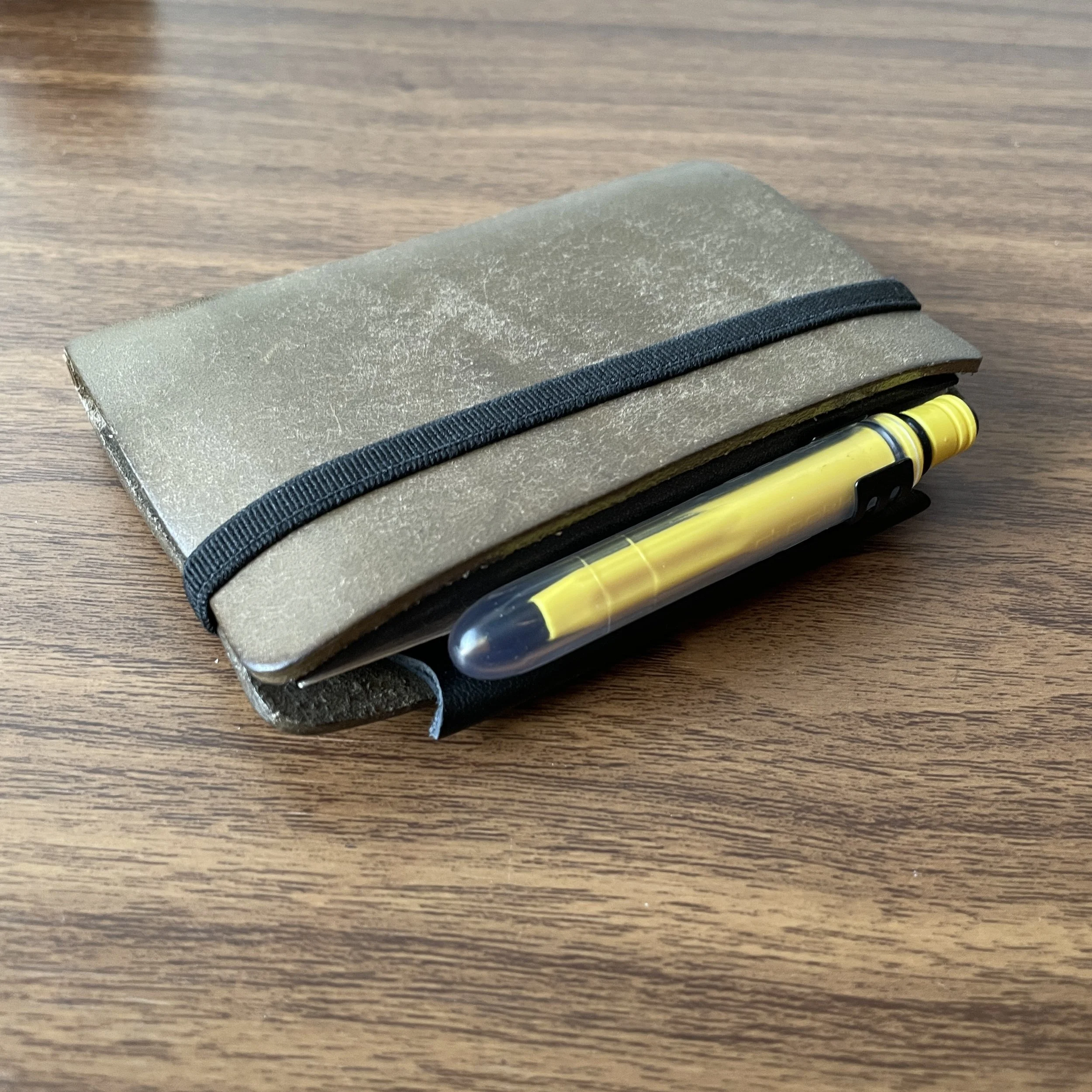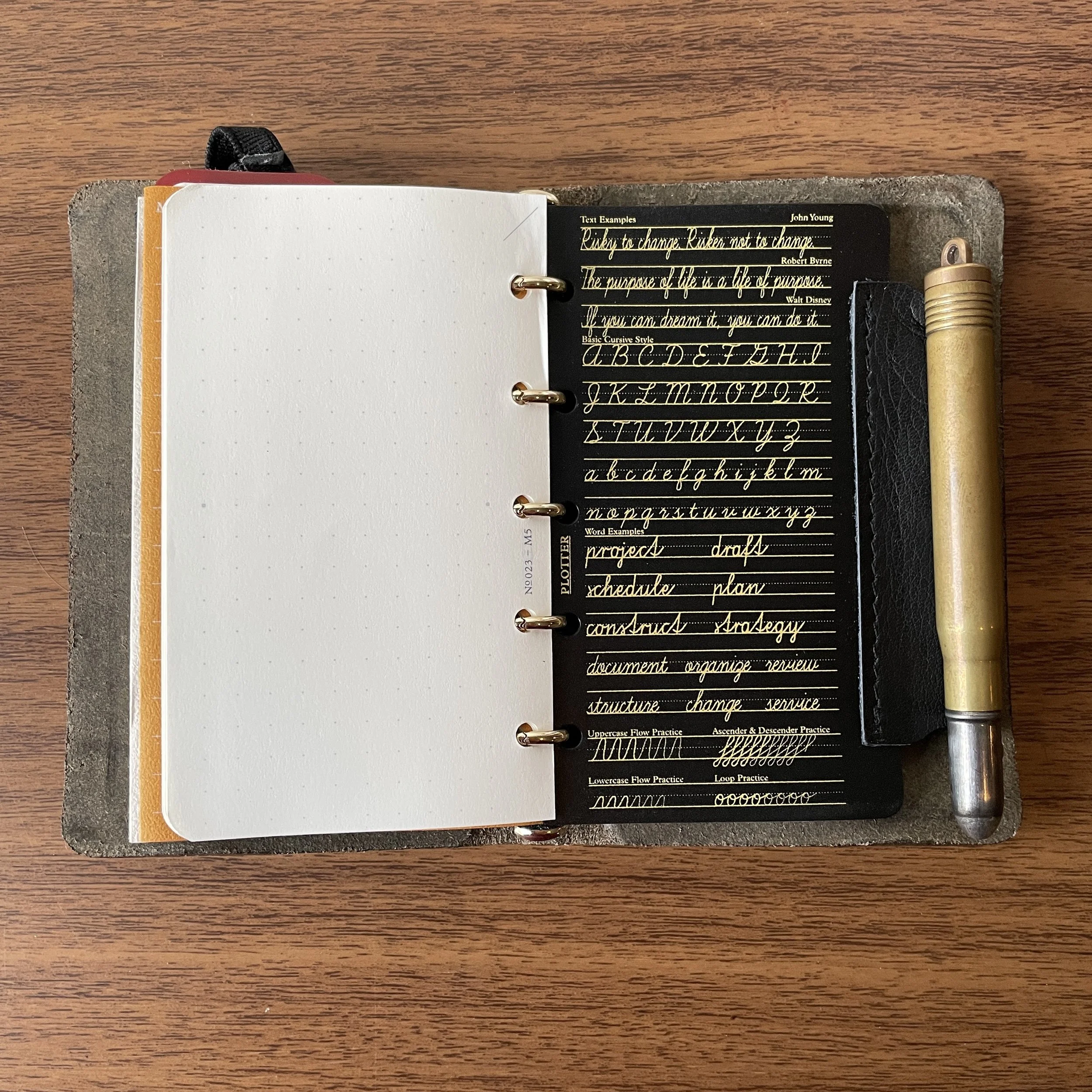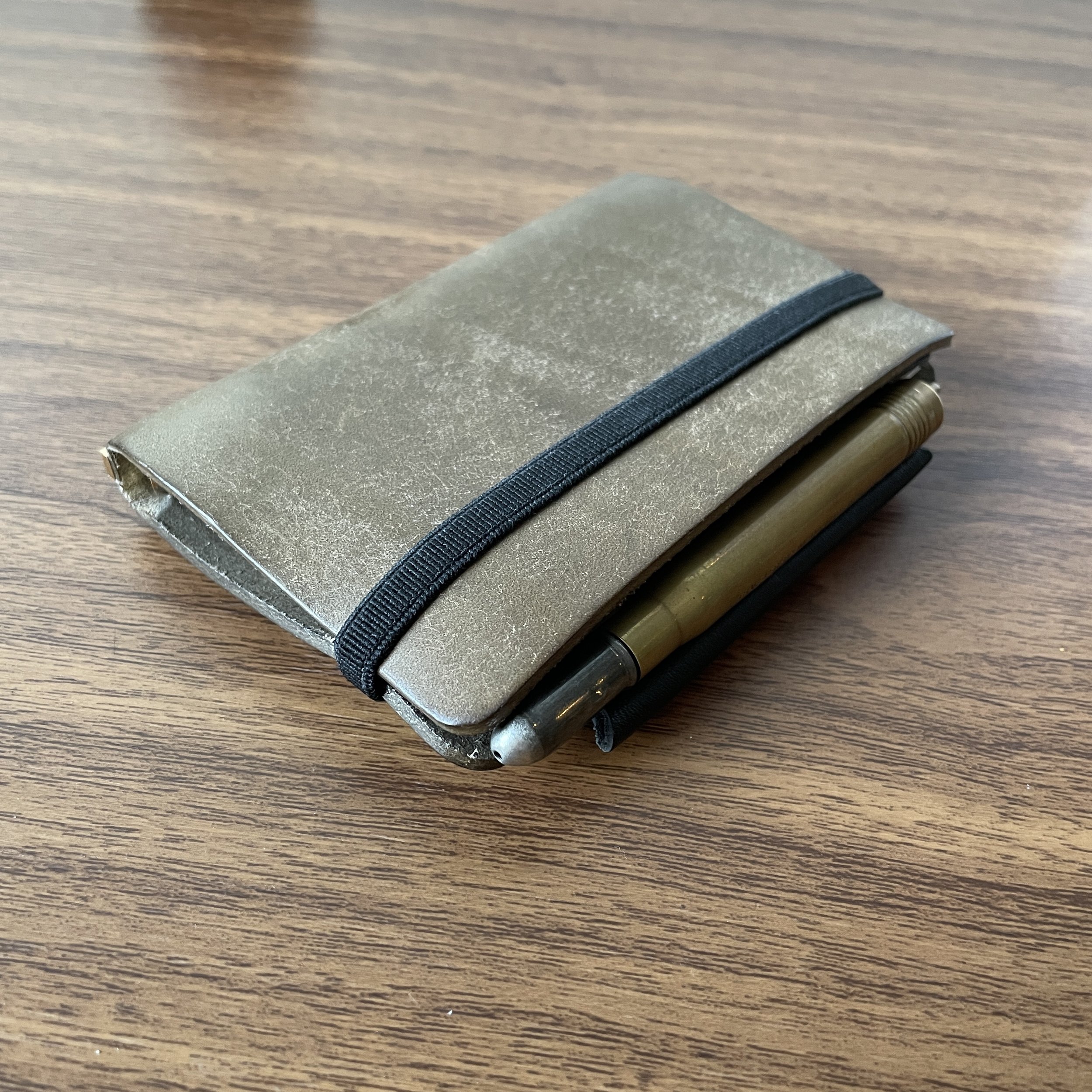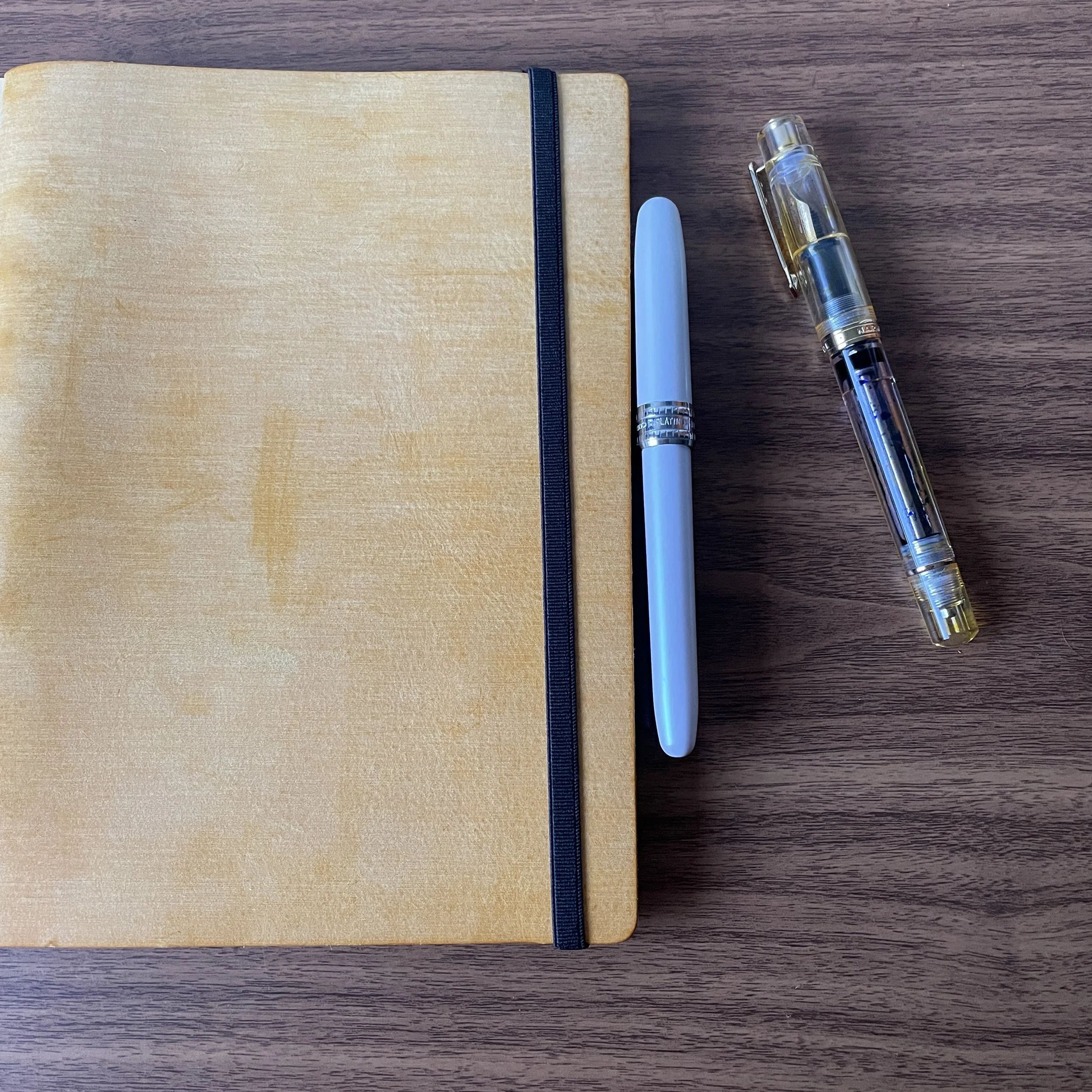This one’s been a long-time coming. Readers have been asking me for more notetaking and organizational “technique” content, which I’ve discovered is pretty hard to do here on the blog. It’s much easier to show people how I use various notebook systems, and in-store customers have remarked that my store demonstrations and explanations would make compelling video content. I’ve previously done similar videos on Roterfaden and certain of the Lochby cases. Today I walk through three of my Plotter binders, including the Mini 5 (Pocket-size), Bible Size, and Standard A5. I’ve also written some about what Plotter is and how I use it, but in this video I actually flip through all of the notebooks and talk about the accessories and how they each fit into my workflow. I’ve also added Chapters so that you can jump to the specific notebook you want to hear about, but please do listen to the intro because it does provide a general overview of Plotter and the overall role it plays for me.
Note: We are not Plotter retailers, and have no affiliation with the brand other than that we enjoy using their products. I will note that many of the items we sell (including looseleaf papers and paper pads from Midori, Clairefontaine, Yamamoto Paper, Nakabayashi, and Iroful) can be trimmed and/or hole-punched to use in Plotter and other notebook systems, which is actually how I personally use much of the paper I consume.
We are supported entirely by purchases from the T.G.S. Curated Shop and pledges via the T.G.S. Patreon Program. Our brick and mortar shop will be open Thursday and Saturday this week, and this Friday by appointment. Typically we have regular Friday hours, but I need to finish upgrading some displays and plan to take the afternoon to do that work. Come see us on Saturday and check out the new look!



